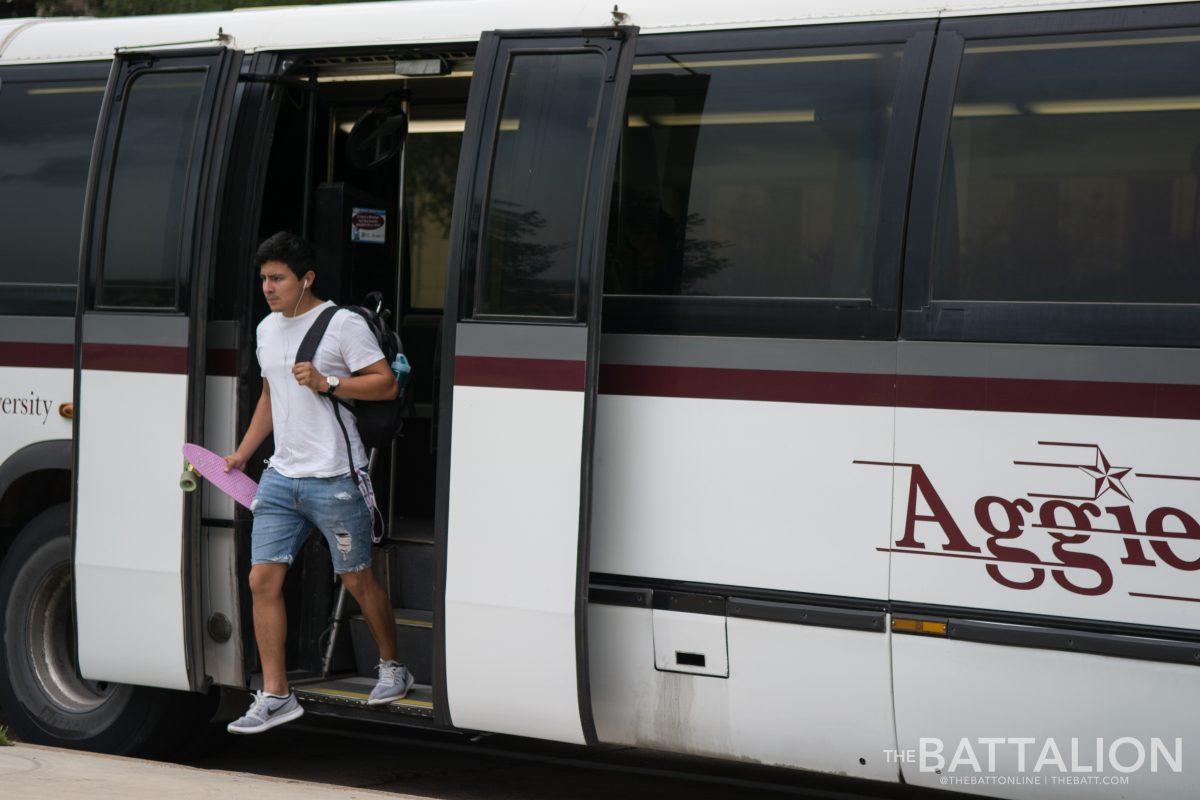Texas A&M provides a variety of transportation methods for students to navigate a large campus, but not all are equal in their effects on the environment and students’ health.
Active transportation, or transportation created by exerting your own energy, is the most environmentally friendly method of travel, according to Ron Steedly, manager of alternative transportation for transportation services. Methods of active transportation include walking, biking and skateboarding.
Using a low-occupancy vehicle option such as driving a car or using a taxi service is one of the least environmentally friendly ways to travel. A bus, by comparison, holds more people and operates in a cycle that keeps it as full as possible for its operating term.
Kelly Wellman, A&M’s director of sustainability, said the most sustainable or environmentally friendly way to commute is to use active transportation or go with the bus system instead of other motor vehicles.
“I definitely promote riding the bus over a single occupancy vehicle,” Wellman said. “Certainly, riding bikes, skateboards, walking— all of those offer opportunities that improve air quality and improve other resource use.”
The buses have a low mile-per-gallon usage compared to an average single occupancy vehicle. However, the buses’ ability to carry dozens of passengers at once makes it much more efficient in terms of fuel consumed per passenger, Steedly said.
Although the buses are able to decrease traffic from the road by holding many passengers, the stop-and-go movement during traffic congestion does affect emissions, according to Joe Zietsman, agency assistant director and center director at the Texas A&M Transportation Institute. These emissions negatively affect people’s health and the older the bus is, the more negative of an impact it will have on health.
“In general, the emissions are much much higher because of those factors,” Zietsman said. “People are affected by vehicle emissions… if you are inside a bus, there’s a likelihood you could be affected by vehicle emissions. It depends on the age of the bus if you are going to be affected more or less and if there are any windows open, and things like that, you can be affected by a bus.”
An alternative to taking buses is Ofo, a bike sharing program on campus, which had 28,625 rides during the month of July with 75 percent of the bikes being used. This translates to saving 2,556 pounds of carbon dioxide from being produced by motor transportation, according to Steedly’s collected data.
Ofo bikes provide an opportunity to exercise on a bike and work as a form of active transportation, but Zietsman urged students to avoid pollution while doing so. Zietsman said being exposed to exhaust from buses can affect allergies and worsen or cause asthma. Zietsman also said there can be other harmful long-term effects from emissions.
“Let’s say you ride the bus every day and you stand and wait and there’s buses coming by, research has shown that you could definitely contract asthma as a result of that,” Zietsman said. “Then there’s some long-term health implications as well that [are] well-documented in terms of heart and lung diseases that can be attributed to diesel emissions as well.”
Those participating in active transportation are more likely to be exposed to pollutants or harmful outputs from motor transportation if too close in proximity to exhausts, Zietsman said. The best way to avoid unnecessary exposure to harmful exhaust from motor transportation is to walk, bike or stand away from them.
Effects of campus transportation on environment, health
September 5, 2018
Photo by Photo by Jesse Everett
Walking, biking and riding the bus are all ways to decrease both emissions and traffic on College Station roadways.
Donate to The Battalion
Your donation will support the student journalists of Texas A&M University - College Station. Your contribution will allow us to purchase equipment and cover our annual website hosting costs.




















